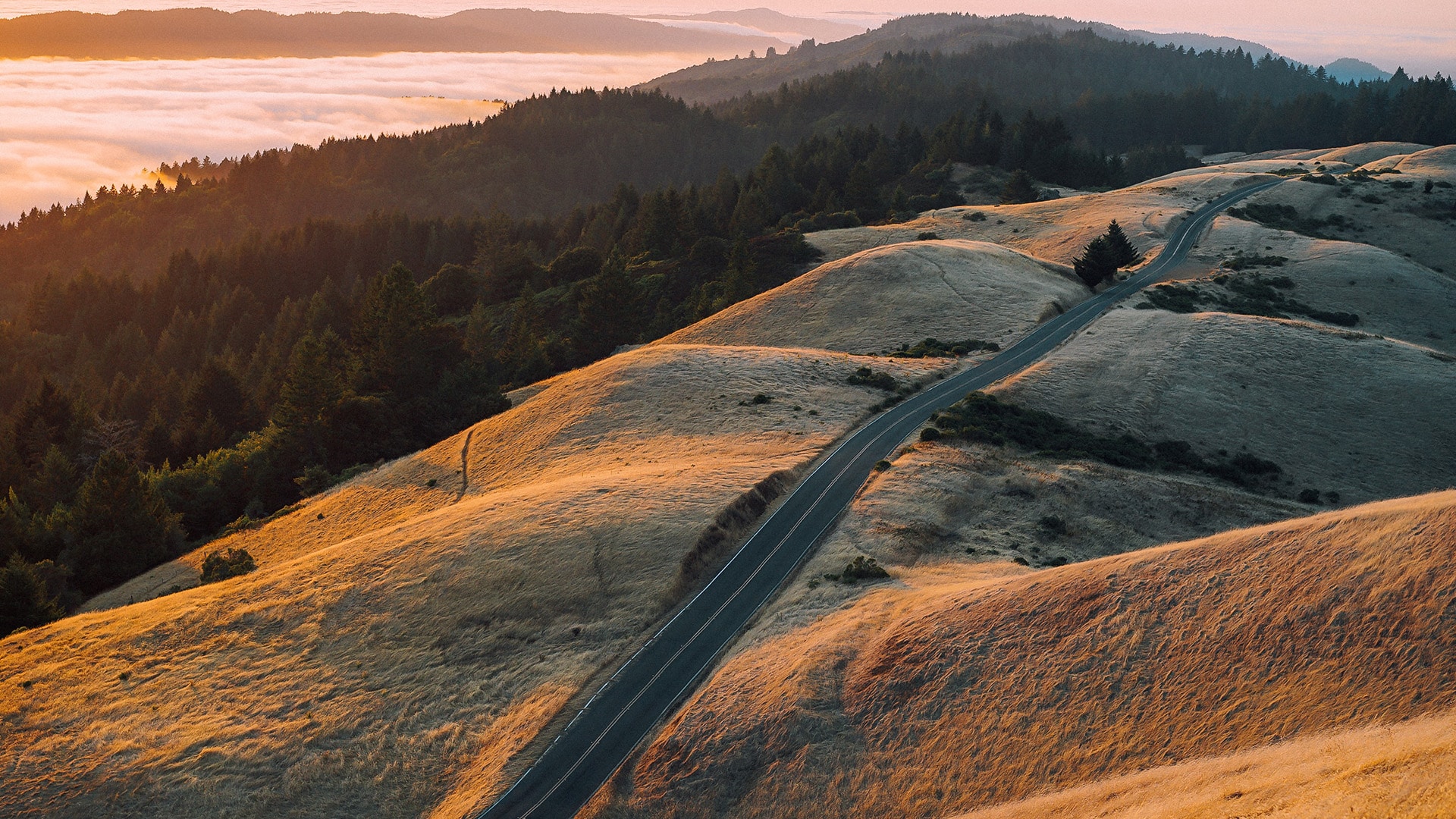
Safety first
For safety reasons, these tips are for the passenger, not for the driver! Only the passenger can fully enjoy the views and leisurely look through the window. Never stick your arms or head outside the window: we will explain how to take the best shots without taking unnecessary risks.

Minimizing reflections
Windows will be your biggest challenge inside a closed car, mainly because they may create glare. If you know in advance that your route is particularly scenic, consider cleaning the windows before you hit the road. When you are ready to take a shot, bring your lens as close as you can to the glass to eliminate reflections. If you have a lens hood, now is the time to use it: it will protect your camera sensor from direct light and allow you to bring the lens close to the glass without fear of ruining it.
You can go all out and purchase a flexible silicone lens hood, such as the Ultimate Lens Hood, specially designed to help create reflection-free picture.
Use fast shutter speeds
Vehicle spells movement. While in landscape photography you can take your time and opt for slow shutter speeds, when you’re on the road you must have quick reflexes and use fast shutter speeds. One way to do this is to select shutter-priority mode: all you need to do is choose a speed – preferably high if you want to freeze motion – and your camera will take care of the other settings. If you have some experience, the manual mode might be the way to go.

Time permitting, you might also try increasing the speed gradually to get a progressive overview, for example by going from 1/100th to 1/500th to 1/1000th of a second. Remember that the faster the exposure time, the sharper the frozen motion. So, at 1/1000, your landscape is likely to be clearer than at 1/500th of a second.
However, you can also take advantage of slower speeds to showcase motion and achieve a blurring effect, as in the image below:

Under clear skies, moderate the sensitivity
If light conditions are less than ideal and you are working with a fast shutter speed (such as 1/500, 1/1000, etc.), your image may be severely underexposed and as a result too dark. On a gloomy day, you can correct the exposure with a higher ISO sensitivity. However, go no higher than ISO 3200–6400, depending on your camera’s settings, so as not to degrade the quality of your image.
Using manual focus
If you can’t put your lens directly against the window, autofocus may not work correctly. If this is the case, set manual focus to infinity to make sure you’re focusing on the landscape.

Above is a counterexample: here, it’s the spatter of raindrops on the window that is in focus. The blurry, darker background brings them nicely to the fore.
Extract a frame from a video
There is one technique that can help you capture landscapes more easily from a moving vehicle, without having to think about all the technical settings. You can shoot a several second-long video and extract a single frame from your footage. Make sure to use maximal recording quality, such as Full HD or even 4K/UHD, and a high frame rate (50, 60 fps or higher). You can do the editing directly in your camera or, if your model does not have video editing functionality, you can use computer software or even a phone app.
Conclusion
For optimal photographs from a moving vehicle, follow a few simple steps: reduce the glare by putting your lens as close to the window as possible, either directly or using accessories; select fast shutter speeds while limiting high ISO sensitivity to get a sharp image. For best results, do a test run to find the right exposure and shutter speed.
By Céline Nébor


